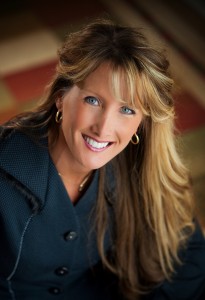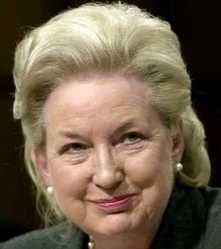As of now, Donald Trump is the GOP’s leading presidential contender. What could pro-lifers expect from his administration? I don’t know. I’m not sure he does either.
Trump says he’s “very” pro-life. After hearing his comments in an interview last year, I thought of a scene from The Princess Bride.


Rebecca Kiessling
Trump told BloombergNews’ Mark Halperin that he was against abortion except in cases like rape and incest. According to him, they’re “the caveats” that “you have to have.” Pro-life activist Rebecca Kiessling knows otherwise. Rebecca was conceived in rape back when abortion was illegal, and she’s only alive today because the law didn’t make those exceptions.
Further, Trump didn’t always identify as “very strong on pro-life,” having once insisted that he was “very pro-choice.” It’s true that leaders like President Reagan also changed their stance on abortion, but it was often after carefully studying the issue, something Trump appears not to have done: during a 2011 interview, he seemed unaware that Roe v. Wade and subsequent cases hinged on the right of privacy.
And that raises an important concern for pro-lifers. There are many ways a president can help protect innocent life, like fighting to defund Planned Parenthood (a group Trump has praised). However, one of the most crucial is via judicial appointments. Trump hasn’t said much about who he’d like to see on the Supreme Court; what he has said isn’t comforting.

Judge Maryanne Trump Barry (via birtherreport.com)
When he was asked about his sister, Judge Maryanne Trump Barry, the candidate described her as “fantastic” and said she would make a “phenomenal” Supreme Court justice. That she voted to strike down a ban on partial-birth abortion went unmentioned.
Trump later claimed that those remarks about his sister were a joke, instead suggesting that he might nominate federal judges Bill Pryor or Diane Sykes. Sykes made headlines in 2012 for helping to block Indiana’s attempt at defunding Planned Parenthood.
Trump’s promise not to nominate Judge Barry provides at least some relief. After all, given her endorsement of partial-birth abortion, it’s hard to imagine she would uphold a ban on dilation and evacuation either. A D&E is typically performed in the latter part of the second trimester, a point when research suggests that a fetus can feel pain. In the video below, Dr. Anthony Levatino explains how it’s done.
After the amniotic fluid is removed, the abortionist uses a sopher clamp — a grasping instrument with rows of sharp “teeth” — to grasp and pull the baby’s arms and legs, tearing the limbs from the child’s body. The abortionist continues to grasp intestines, spine, heart, lungs, and any other limbs or body parts. The most difficult part of the procedure is usually finding, grasping and crushing the baby’s head. After removing pieces of the child’s skull, the abortionist uses a curette to scrape the uterus and remove the placenta and any remaining parts of the baby.
With the death of Justice Antonin Scalia, making good judicial appointments has become even more crucial. I’m not saying that Donald Trump won’t find suitable candidates, but pro-lifers need to offer him some guidance.
While we’re at it, we need to explain why Planned Parenthood’s half a billion dollars in federal funding should go to to federally qualified health centers and community health centers instead of America’s largest abortion chain.
Simply put, it’s time Trump was educated on the issues. And when he gets them wrong, pro-lifers should let him know.







